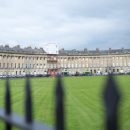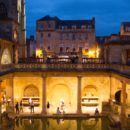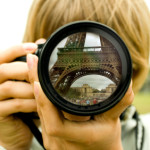Most of the time when we’re driving and we see an amazing scene, we take our camera and take some pictures. Once we go check out the pictures in a larger screen, the images doesn’t give justice to what our eyes saw. Landscape photography isn’t a point and shoot affair. Practice and experience is needed to get quality shots. Here are some tips to help you started with landscape photography.
Scout
Survey the area first if you want to take landscape photographs. Knowing the place will help you determine where to take the shot and where the light is falling. If the place you are shooting is well known, you can view other photographer’s pictures and compare your shooting location with them. This can lead into a better point of view that can create better landscape shots.
Proper Equipment
A wide angle lens is a must when shooting landscapes. You want every detail in the shot and a wide angle lens can provide that feature. A normal or telephoto lens will give you a hard time capturing the details your eye can see.
Also use a high quality tripod when shooting. A lot of photographers skimp on quality tripods and would rather let a $20 tripod hold their thousand dollar equipments. A cheap tripod might not withstand the wind or the weight of your camera resulting in damages.
Knowing how to use the various filters available is an advantage. A simple ND filter might not cut it for getting the proper exposure. A graduated filter might be needed so the exposure of your sky and foreground is even.
Right Timing
Limit your time during the golden hours of photography. Either early in the morning, around sunrise, or near sunset. The light during those times is well received by the camera because of its softness and color. Sunlight is angled low during those times so the light is generally softer compared to the light at noon when the sun is directly over us.
Hyperfocal Distance
Using an aperture of f/16 won’t cut it sometimes. Despite having a wide DOF, that aperture value can’t encompass everything in the scene. By using the hyperfocal distance, you get everything sharp. You can use a hyperfocal distance calculator so you can compute this value easier when shooting outside.
Composition
Good composition will make or break your image. An application of the rule of thirds can work here. Take note of the sky and horizon. Make use of various foregrounds to add more impact to your image.
Here are just some tips in shooting landscapes. Ultimately, experience in the field will teach you the most. So keep on shooting and embrace the light.






